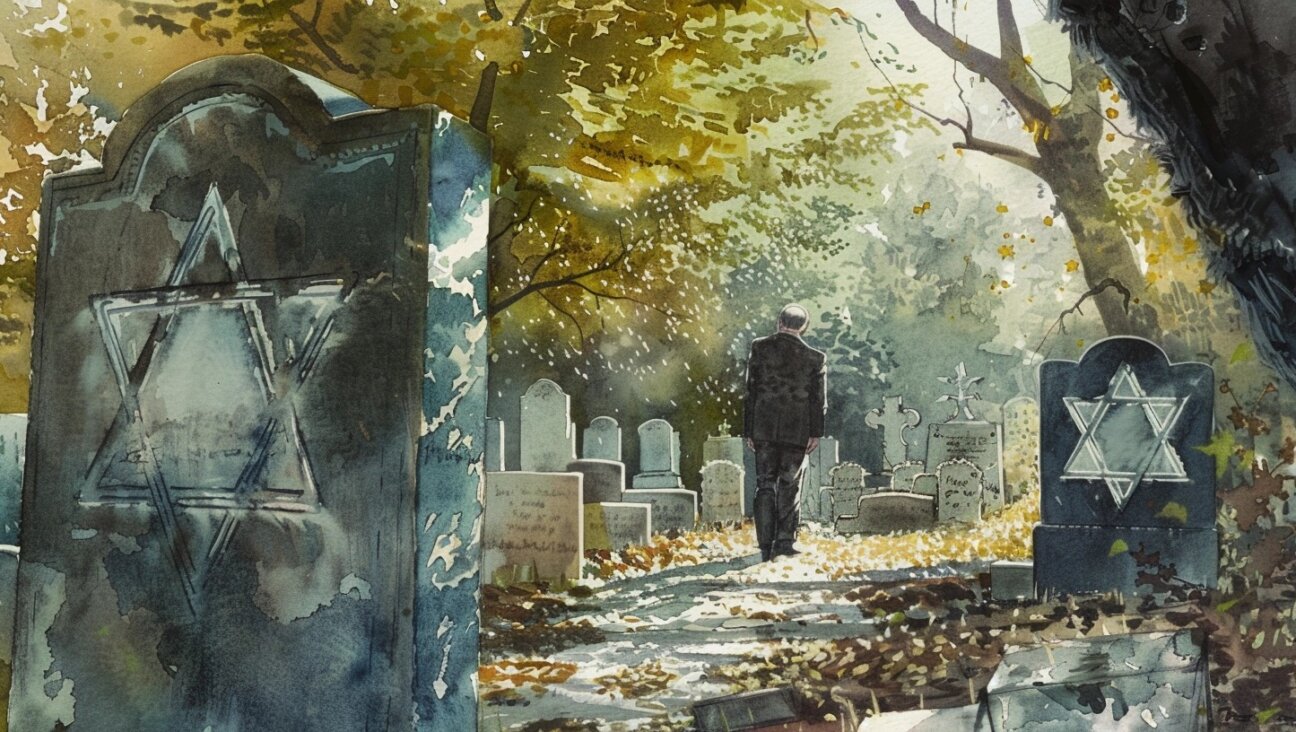Revisiting the Jewish Crime of the Century

Image by Getty Images
Compulsion
By Meyer Levin
Fig Tree Books, 480 pages, $15.95
Why, in 2015, should we be interested in a novel that was written 60 years ago? Moreover, why are we interested in a crime that was committed 90 years ago?
When I was growing up in New York in the 1950s, there was no one who did not know who Leopold and Loeb were — and there was no one who did not know “Compulsion,” Meyer Levin’s roman à clef of the case.
Levin’s 1956 novel, now reissued with an introduction by the author’s son Gabriel Levin, is a fictional account of Nathan Leopold and Richard Loeb’s horrible and horrifying murder of a 14-year-old boy. Levin’s perpetrators are named Judd Steiner and Artie Straus, but the story sticks closely to the actual facts of the 1924 crime.
Levin’s “Compulsion” was a best seller when it appeared in 1956 — and for good reason. Then, as now, murder mystery was a popular genre and murders were daily fare for the tabloids. But the killing of the 14-year-old boy by Leopold and Loeb was no ordinary murder. It was not about the jealous boyfriend, or about greed, or about familial rage. And it was certainly not about politics or ideology or religion, the fuel of genocide. The murder was about nothing at all. The murderers’ goal, as they later explained, was a “perfect crime.” Leopold and Loeb gratuitously murdered 14-year-old Bobby Franks in order to achieve precisely that. The murderers looked upon their act as an intellectual project carried out with the detachment of a scientist.
Levin was particularly fascinated by the Leopold and Loeb case because he was so close to it: Like the killers, he was a precocious Jewish student at the University of Chicago, and he helped to cover the case as a young reporter for the Chicago Daily News. Indeed, the narrator, Sid Silver, is Levin himself.
“Compulsion” was published in 1956. The 1950s were a period in which long, talky, discursive novels were celebrated — some were superb, many (such as “By Love Possessed,” the best seller of 1957) were dreck — and writers like Hemingway were marginalized as “low brow” and even “primitive.” “Compulsion” is long, and yes, it is somewhat talky and psychologically analytical — but Levin in this book owed as much to Hemingway as he did to Flaubert.
Writers and filmmakers have been drawn to “Compulsion.” The teenage Leopold and Loeb — prodigies who had graduated from the University of Chicago while still in their teens — were immersed in Dostoevsky (“Crime and Punishment” with its philosophical justification of the crime), Gide, and above all Nietzsche and his notion of the superior man not bound by morality.
But “Compulsion” is different. It is not especially “literary”: It is a true-crime novel, and it anticipated Truman Capote’s “nonfiction novel” genre (inaugurated by Capote’s “In Cold Blood”) by 13 years. Levin satisfied his public’s thirst for a crime novel, and recalled for his public a crime that no one had forgotten.
Yes, “Compulsion” is a crime thriller, but it’s much more. The novel is in the tradition of the psychological thriller, and draws upon the social psychology that inhered in the case: What were the Jews, especially these upscale Jews of 1920s (and 1950s) Chicago all about? And the psychology is sexual psychology as well. Homosexuality, Steiner’s mutilation of the body (in the true case, Leopold mutilated Frank’s genitals), and the stunting, indeed blockage, of sexual maturity, which comes out again and again in the novel. There is the odor in the narrative of Jewish self-hatred, a là Freud’s 19th-century notion that the Jew does not want to burdened with being a Jew; hence, the mutilation of the male genitals.
Meyer Levin has perfect pitch in capturing the milieu of 1920s high-bourgeois Jewish Chicago, with its deep fear of bad publicity. It’s basic: Jews did not want to be visible. This was reflected in the Jewish public affairs arena as well, in which Jewish organizations adopted quietism as their operative strategy (the American Jewish Congress was the lone, and much maligned, exception), rather than the activism of social action.
In fact, the atmosphere in “Compulsion” is the flip side of the medieval blood libel — and that was good news for 1920s Jewish Chicago. “It’s lucky it was a Jewish boy they picked,” says the father of Sid, the narrator. Indeed, had Steiner and Straus (Leopold and Loeb) chosen a Christian, the murder would have been viewed through the lens of a different construct, not that of a modern thrill-killing but of ritual murder, the ancient blood libel.
It is no great stretch to suggest that the actions of Leopold and Loeb (and Steiner and Straus in the book) reflect and indeed prefigure, the horrors of the 20th century. Levin entitles the first half of the book “The Crime of Our Century,” and the title is not merely a nod to the lurid; it also says exactly what the crime was about. If the crime was about anything, it was about moral anarchy, the moral anarchy that was responsible for Stalin’s slaughters, for the Holocaust, for the Armenian genocide, for Rwanda, for Darfur. It was the crime of our century.
And this is why, in 2015, we are yet interested in “Compulsion.” It is not because we are in an era of killing, of slaughter; but because the very idea of killing is an idea of horror. “Compulsion” is, to be sure, a period piece, but the horror of the Leopold-Loeb crime is lasting — as it ought to be.
Jerome Chanes, a Forward contributing editor, writes about Jewish public affairs, literature, and drama. The author of four books, he is a fellow at the Center for Jewish Studies of the CUNY Graduate Center.

I hope you appreciated this article. Before you go, I’d like to ask you to please support the Forward’s award-winning journalism this Passover.
In this age of misinformation, our work is needed like never before. We report on the news that matters most to American Jews, driven by truth, not ideology.
At a time when newsrooms are closing or cutting back, the Forward has removed its paywall. That means for the first time in our 126-year history, Forward journalism is free to everyone, everywhere. With an ongoing war, rising antisemitism, and a flood of disinformation that may affect the upcoming election, we believe that free and open access to Jewish journalism is imperative.
Readers like you make it all possible. Right now, we’re in the middle of our Passover Pledge Drive and we still need 300 people to step up and make a gift to sustain our trustworthy, independent journalism.
Make a gift of any size and become a Forward member today. You’ll support our mission to tell the American Jewish story fully and fairly.
— Rachel Fishman Feddersen, Publisher and CEO
Join our mission to tell the Jewish story fully and fairly.
Only 300 more gifts needed by April 30
























